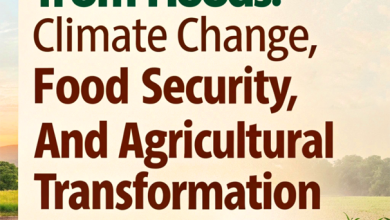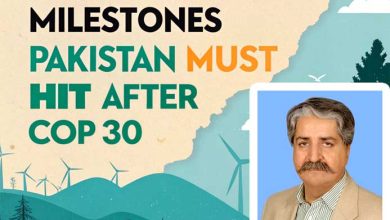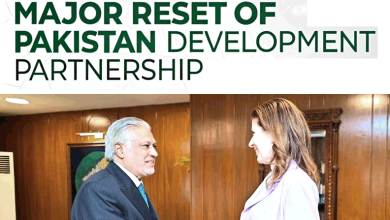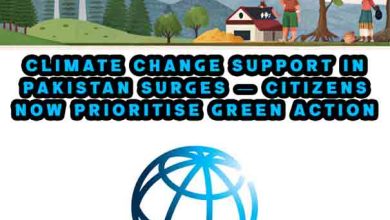Opinion: Pakistan floods show global security hinges on water security
As delegates gathered in New York last month for the first UN Water Conference in 46 years, the statistics from the catastrophic flooding in Pakistan in 2022 should serve as a stark reminder of the impact of climate change on water — and human — security.
Eight million people were displaced. Two thousand lives were lost, in addition to 1 million livestock. $30 billion was wiped from the economy, and decades of hard-earned socioeconomic gains were swept away.
Even the most alarming statistics can’t convey the extent of the lasting harm done to so many lives and communities. The floods hit the lowest-income and most vulnerable, washing away entire villages and the infrastructure that served them. The damage will cost at least $16.3 billion to fix. Recovery and reconstruction costs are projected at 1.6 times the entire budgeted national development expenditure for 2023.
It is largely through water — too much, too little, too unpredictable — that people will directly experience climate change. And make no mistake, the 2022 flooding was climate change at work: Pakistan received roughly double its normal rainfall from July to September, with many meteorological stations registering record highs since 1961.
Water extremes and emergencies are the new norm around the world. Summer and winter droughts, wildfires, and exceptionally low flows in major river systems are all — like the floods in Pakistan — manifestations of the global climate crisis we are already in. They show that we have entered a new era of water risk — and that we are not ready.
In this context, water security — and mitigation of and adaptation to extreme risk — are now urgent priorities. Water security underpins food security, human health, and economic development. Improving the resilience of global water systems against climate change-related disruption of the scale seen in Pakistan is a matter of human security.
A business-as-usual approach to water security is not an option. Instead, we need a mission-driven agenda that reflects the complexity of the challenge. What does that look like?
Faced with increased frequency and intensity of water emergencies, we must avoid reliance on approaches that have worked in less extreme conditions. Existing predictive modeling alone is inadequate. We need better research directed at policymaking to improve the quality and timing of responses. We must, likewise, avoid potentially disastrous maladaptation measures, such as raising levees year on year when they offer only limited protection against the future risk of more extreme flooding.
Science and innovation can offer adaptation and mitigation solutions, including more accurate long-range flood forecasting, flood and crop insurance for farmers, and stronger soil moisture management and drainage. Food security research partnership CGIAR’s studies have also developed more drought-tolerant wheat and maize, rice that can withstand greater saltwater intrusion, and solar irrigation that supports millions of farmers in South Asia.
These and other measures to build safe access to water, protect water quality, and enhance water storage and flood mitigation are key elements in building more water-secure environments. Yet at the same time we need to protect at-risk populations in areas such as flood plains, via flood prevention measures based on sound science, and — where necessary — moving people out of harm’s way.
Ultimately, all responses must build on the lived experience of those in the global south, closest to these problems, rather than those with a bird’s eye view. To that end, and ahead of the United Nations Water Conference, the International Water Management Institute, or IWMI, a CGIAR research center headquartered in Sri Lanka, co-convened a series of dialogues with partners from the global south, culminating in a conference in Cape Town in February.
This Transformative Futures for Water Security, or TFWS, dialogue identified eight missions and strategies that tackle human-water security relationships, such as building farmers’ resilience to climate change and water risks, increasing freshwater availability, future-proofing water infrastructure, making better data available, and delivering good water governance.
A clear message coming out of the dialogues was that we must recognize the severity of the crisis and respond with greater urgency. There is likely very little time before the next catastrophic event. The main output of the U.N. Water Conference was the “Water Action Agenda,” to which the eight-mission outputs of the TFWS dialogues will contribute. Emphasizing action over rhetoric, these missions will deliver against clear objectives through cross-sectoral partnerships guided by sound research.
Pakistan’s catastrophic losses must serve as a warning to humanity. We are at a tipping point in global climate change with a once-in-a-generation chance to prepare for unprecedented water system disruption. Globally coordinated science-based action must be the basis on which we build and enforce resilience in our food, land, and water systems. On the heels of this UNWC, we have to aim higher and move faster than ever before. We cannot wait another 46 years for action.







